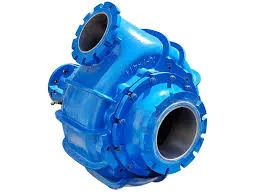Hindi
- Afrikaans
- Albanian
- Amharic
- Arabic
- Armenian
- Azerbaijani
- Basque
- Belarusian
- Bengali
- Bosnian
- Bulgarian
- Catalan
- Cebuano
- Corsican
- Croatian
- Czech
- Danish
- Dutch
- English
- Esperanto
- Estonian
- Finnish
- French
- Frisian
- Galician
- Georgian
- German
- Greek
- Gujarati
- Haitian Creole
- hausa
- hawaiian
- Hebrew
- Hindi
- Miao
- Hungarian
- Icelandic
- igbo
- Indonesian
- irish
- Italian
- Japanese
- Javanese
- Kannada
- kazakh
- Khmer
- Rwandese
- Korean
- Kurdish
- Kyrgyz
- Lao
- Latin
- Latvian
- Lithuanian
- Luxembourgish
- Macedonian
- Malgashi
- Malay
- Malayalam
- Maltese
- Maori
- Marathi
- Mongolian
- Myanmar
- Nepali
- Norwegian
- Norwegian
- Occitan
- Pashto
- Persian
- Polish
- Portuguese
- Punjabi
- Romanian
- Russian
- Samoan
- Scottish Gaelic
- Serbian
- Sesotho
- Shona
- Sindhi
- Sinhala
- Slovak
- Slovenian
- Somali
- Spanish
- Sundanese
- Swahili
- Swedish
- Tagalog
- Tajik
- Tamil
- Tatar
- Telugu
- Thai
- Turkish
- Turkmen
- Ukrainian
- Urdu
- Uighur
- Uzbek
- Vietnamese
- Welsh
- Bantu
- Yiddish
- Yoruba
- Zulu
Telephone: +86 13120555503
Email: frank@cypump.com
सितम्बर . 22, 2024 17:17 Back to list
slurry pump sizing
Understanding Slurry Pump Sizing A Comprehensive Guide
Slurry pumps play a pivotal role in various industries, including mining, construction, and wastewater management. These pumps are specifically designed to handle mixtures of liquid and solids, known as slurries. Proper sizing of slurry pumps is essential to ensure efficiency, minimize wear and tear, and reduce operational costs. This article outlines the fundamental aspects of slurry pump sizing, including critical considerations and methodologies.
Key Factors in Slurry Pump Sizing
1. Slurry Composition The first step in sizing a slurry pump is understanding the composition of the slurry. This includes the type of solids present, their particle size, density, and concentration. A higher solid concentration or larger particles typically requires a more robust pump to handle the increased viscosity and abrasion.
2. Flow Rate Requirements Determine the required flow rate for the application. This is often expressed in gallons per minute (GPM) or liters per second (L/s). The flow rate is influenced by the system's design and the rate at which materials need to be transported.
3. Head Requirements Head refers to the height to which the slurry needs to be pumped. It is crucial to calculate both total dynamic head (TDH) and static head. The TDH includes friction losses in the piping system, and it's necessary to account for these when selecting a pump to ensure it can overcome the resistance encountered during operation.
4. Viscosity and Density The viscosity of the slurry affects how easily it can be pumped. Higher viscosity slurries require more powerful pumps, while density impacts the weight of the slurry, influencing the pump's capability. It's essential to consult viscosity charts and density tables to select the appropriate pump specifications.
5. Pump Type There are several types of slurry pumps, including centrifugal, positive displacement, and submersible pumps. Each type has its advantages and drawbacks. Centrifugal pumps are popular for their efficiency in transporting low-density slurries, while positive displacement pumps are better suited for high-density applications or thicker slurries.
slurry pump sizing

Sizing Methodologies
Once the critical factors have been assessed, several methodologies can be employed to size the pump accurately
- Pump Head Calculations Use specific formulas that account for the static and dynamic head, taking into consideration factors like pipe length, diameter, and material.
- Pump Performance Curves Refer to pump performance curves provided by manufacturers. These curves illustrate the flow rate and head produced for various pump sizes at specific operating conditions, enabling selection of the pump that best matches the requirements.
- Trial and Error In some cases, field testing may be necessary. Running different pump sizes and configurations can provide practical insights into their performance under real-world conditions.
Conclusion
Proper slurry pump sizing is a crucial aspect of ensuring operational efficiency and longevity in handling abrasive, viscous mixtures. By carefully considering slurry composition, flow rates, head requirements, viscosity, and selecting the appropriate pump type, operators can optimize their pumping systems. Ultimately, investment in the right slurry pump, correctly sized for the application, can lead to significant cost savings and improved productivity in the long run.
-
Heavy-Duty Mining Sludge Pumps - Wear-Resistant Slurry Handling
NewsAug.02,2025
-
Horizontal Split Case Pump with GPT-4 Turbo | High Efficiency
NewsAug.01,2025
-
ISG Series Pipeline Pump - Chi Yuan Pumps | High Efficiency, Durable Design
NewsAug.01,2025
-
Advanced Flue Gas Desulfurization Pump with GPT-4 Turbo | Durable & Efficient
NewsJul.31,2025
-
ISG Series Vertical Pipeline Pump - Chi Yuan Pumps | Advanced Hydraulic Design&Durable Construction
NewsJul.31,2025
-
ISG Series Vertical Pipeline Pump - Chi Yuan Pumps | Energy Efficient & Low Noise
NewsJul.31,2025










